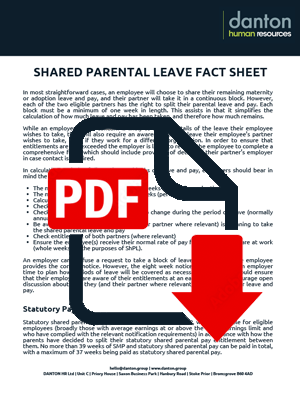Shared Parental Leave (SLP) was introduced in 2015 to enable parents to share the childcare responsibilities following the birth or adoption of their children. The policy is intended to support equality, close the gender pay gap, and help employers retain talent. But despite the government setting an original uptake target of 25%, current figures suggest that the number of families opting to share parental leave is much lower than this figure.
We’ve put together the following information to help you navigate shared parental leave and answer some commonly asked questions, including: What are existing employee rights and obligations? How is shared parental leave divided? What is the process for applying shared parental leave?
Read on to learn more about shared parental leave, how to guide your employees through the process smoothly and implement it in your workplace.
Download FactSheet
Parental Responsibility
To qualify for shared parental leave, the employee must have responsibility for bringing up the child, irrespective of gender or sexual orientation
Eligibility
Eligible parents can get SPL during the first year, after the:
Time Entitlements
Eligible parents are entitled to 50 weeks shared parental leave and up to 37 weeks of shared parental pay
Sharing Leave
How parents choose to share their leave should suit their personal circumstances
Continuous or Discontinuous?
Continuous leave relates to a full block of time, whereas discontinuous is when blocks of time are mixed with time back at work
Shared Parental Pay (ShPP)
From 3rd April 2022, the statutory rate of ShPP is either: £156.66 or 90% of employees’ weekly earnings
Notice Period
Each partner must provide 8 weeks’ notice to their employer of their intention to take SPL
If you would to find out more, please contact us:
For information about how we protect your personal information, please please take a look at our privacy policy.










